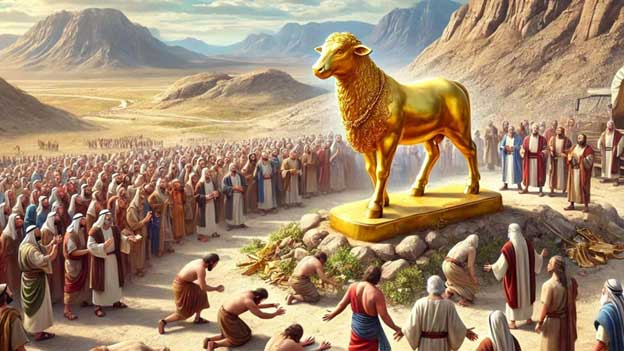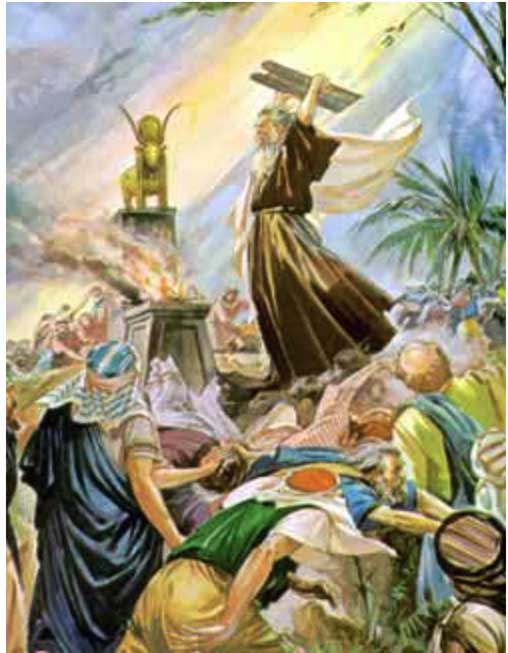LESSON 3: Worshiping the golden Calf (Exodus 32)
Lesson 3: Worshiping the Golden Calf
(Exodus 32)
Our story begins at the foot of Mount Sinai. The Israelites, led by Moses, had recently experienced incredible miracles—escaping slavery in Egypt, crossing the Red Sea, and receiving manna from heaven.
Now, they were camped at Mount Sinai, waiting for Moses, who went up the mountain to receive the Ten Commandments from God. He stayed there for 40 days and nights, during which God gave him laws to guide the people in living holy lives. But down below, the Israelites grew restless. They were uncertain about what had happened to Moses and felt abandoned in the wilderness. Their impatience led them to make a poor decision.
The Golden Calf
The people asked Aaron, Moses’ brother and second-in-command, to make them a god they could worship, saying: “Come, make us gods who will go before us. As for this fellow Moses who brought us out of Egypt, we don’t know what has happened to him.” (Exodus 32:1). They turned to something tangible to worship, forgetting God’s power and promises. Aaron collected gold jewelry from the people and melted it down to create a statue in the shape of a calf. The calf was likely inspired by Egyptian idols, as the Israelites were familiar with idol worship from their time in Egypt. They proclaimed: “These are your gods, Israel, who brought you up out of Egypt.” (Exodus 32:4). Aaron offered whole burnt offerings and peace offerings. The people held a festival, dancing and feasting around the calf, showing their disobedience to God’s command to worship Him alone.
God’s Anger:
On Mount Sinai, God saw what the Israelites were doing and became angry. He told Moses: “Go down because your people, whom you brought up out of Egypt, have become corrupt.” (Exodus 32:7). God considered destroying the Israelites and starting over with Moses, but Moses pleaded for their forgiveness.
Moses’ Return:
When Moses came down the mountain, he saw the people worshiping the calf. Furious, he threw down the stone tablets containing the Ten Commandments, breaking them as a symbol of the broken covenant. He destroyed the golden calf, grinding it into powder and scattering it on water, which he made the Israelites drink as a reminder of their sin.
Punishment:
Moses called for those still loyal to God to stand with him. The Levites responded and were tasked with punishing the worst offenders. About 3,000 people died that day. Moses went back up Mount Sinai to ask God to forgive the people. God showed mercy, but He also sent a plague as a consequence of their actions.
Lessons from the Story
- Impatience Can Lead to Sin: The Israelites’ impatience led them to abandon their faith in God and turn to idol worship. This teaches us to trust God even when we don’t immediately see His plans unfolding.
- God Alone Deserves Worship: The golden calf symbolizes how people sometimes prioritize material things or idols over God. True worship should always be directed to God alone.
- Leaders Have Responsibilities: Aaron’s failure to stand firm shows how leadership requires courage to guide others in faith. Moses’ intercession highlights the importance of praying for those who go astray.
- God Is Just but Merciful: While God punished the Israelites for their sin, He also forgave them after Moses interceded. This reminds us that while there are consequences for disobedience, God’s mercy is always available.
Questions
- Why did the Israelites make the Golden Calf?
- How did God feel about their actions?
- What can we learn from this story?


